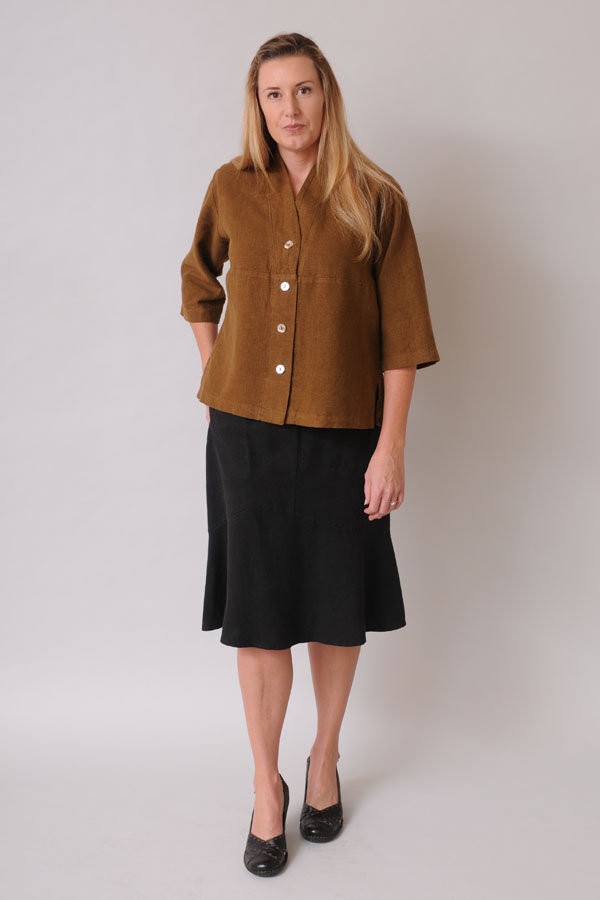Climate report to big fashion: Make sustainable clothing a reality now!
Posted by Rose on 17th Aug 2021
The apparel business at large is failing to grasp the urgency of the situation while a few sustainable fashion brands demonstrate the way forward
The just-released report by the UN’s Intergovernmental Panel on Climate Change (IPCC) is dire and its message to the fashion industry is clear: Global warming is an urgent and existential threat, but big fashion hasn't yet grasped that urgency.
Rose Gerstner is the founder and chief designer at Sympatico Clothing. She blogs about design, fit, eco-friendly fabrics and the innovations embraced by sustainable fashion brands.
Sympatico’s collection has alway embodied the qualities the UN’s new climate report urges. (Tuxedo Top and Flip Skirt.)
"Our message to every country, government, business and part of society is simple. The next decade is decisive for climate action,” says Alok Sharma, who is the incoming president of the United Nations Climate Change Conference. “We all need to follow the science and embrace our responsibilities to keep the goal of 1.5°C alive: That’s the threshold scientists have warned will lead to catastrophic and irreversible impacts. This includes the fashion industry.”
While there has a been a lot of conversation coming from the big fashion sector regarding sustainability, progress has been sketchy and slow in coming; too slow according to IPCC scientists. Some brands have set out ambitious goals for reducing their impacts. But those goals are largely set 10 or more years in the future. The IPCC message: We can’t wait!
The IPCC report is just the most recent in a series of wakeup calls that have targeted big fashion as a primary cause of climate disruption and environmental degradation. Here are some of the major takeaways from the report:
Supply chain emissions are still the leading carbon culprit
Lots of brands have already set lofty goals to decrease their impacts over the long term (emphasis on long term). The Fashion Industry Charter for Climate Action aims for net-zero emissions by 2050. But that’s clearly too late, if science’s warnings are to be believed.
Big fashion needs to adopt full-lifecycle thinking
A lot of focus has been given to specific areas of manufacturing such as production methods and transport, but there’s a notable lack of true lifecycle thinking that environmentally accounts for clothing from its textile origins in the field or factory to its end-of-life recycling or upcycling. Far too much effort has been expended to manage public impressions through marketing as opposed to actually following the science.
The people who make the clothes must be part of the solution
So far, the workforce that is the engine of the fast-fashion supply chain has been given little consideration. Humane labor practices must be part of the process of greening our apparel industry.
We need to act now
Lofty goals set for 2040 or 2050 may seem reasonable in the glow of greenwashing campaigns. But most of those commitments lack concrete details about how the goals are to be met. Further, the IPCC report says we don’t have anything like that long to reverse course. Unless fashion begins getting serious about climate disruption in the short-term—over the next five to ten years—it will continue to be a prime cause of climate disruption.
You as concerned consumers are helping to drive that point home to big fashion.
Share:






